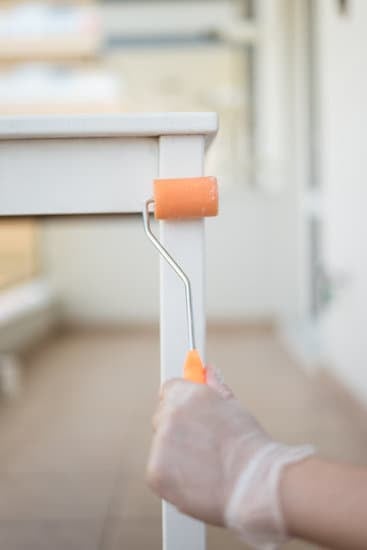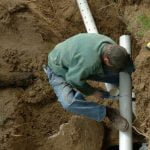Homeownership often comes with the need for making renovations and improvements to ensure a comfortable living space. However, financing these projects can be a daunting task. Two common options for homeowners are HELOCs (Home Equity Lines of Credit) and home improvement loans.
Both provide financial assistance, but understanding which option is better suited for your needs is crucial. In this article, we will explore the differences between Heloc and home improvement loans, considering factors such as interest rates, terms, flexibility in usage, advantages, disadvantages, personal financial situations, real-life case studies, and expert recommendations. By examining all these aspects, you will be able to make an informed decision when it comes to financing your home improvements.
Oftentimes confused with each other, it is important to have a clear understanding of what a HELOC entails before making any decisions. A Home Equity Line of Credit (HELOC) allows homeowners to borrow against the equity they have built up in their property over time. This type of credit line operates much like a credit card where you can withdraw funds as needed and pay back only the amount borrowed plus interest.
On the other hand, home improvement loans offer another route for obtaining funds specifically tailored towards renovating or repairing your property. Unlike a HELOC where you may borrow multiple times over an extended period of time, a home improvement loan provides a lump sum amount upfront that is typically repaid in monthly installments over a fixed term.
In the following sections of this article, we will delve deeper into the key differences between these two financing options: comparing interest rates and terms while analyzing how Heloc and home improvement loans can be utilized for different projects. We will also consider the advantages and disadvantages associated with both options and highlight factors that should guide your decision-making process based on your personal financial situation.
Real-life case studies will provide insight into how individuals have opted for either HELOCs or home improvement loans, and expert recommendations will help identify the circumstances in which a HELOC may be more suitable than a home improvement loan. So, let’s begin by understanding the need for financing home improvements.
Definition and Explanation
A Home Equity Line of Credit (HELOC) is a type of loan that allows homeowners to borrow money against the equity they have built up in their homes. It is a revolving line of credit, similar to a credit card, where borrowers are given access to a certain amount of funds that they can use as needed. The amount borrowed is usually based on the value of the home minus any outstanding mortgage balances.
One key feature of a HELOC is its variable interest rate. Unlike a traditional home loan or mortgage, the interest rate for a HELOC can fluctuate over time. This means that if market interest rates go up, so does your rate and monthly payment. Conversely, if market rates decrease, your rate and payment will decrease as well.
Another important aspect of a HELOC is the draw period and repayment period. During the draw period, typically lasting around 5-10 years, homeowners can borrow from the line of credit at their discretion. They only need to make minimum monthly payments on the interest during this time. After the draw period ends, the repayment period begins where borrowers are required to make principal and interest payments until the loan is fully repaid.
Here are some key points related to HELOCs:
- Access to funds: With a HELOC, homeowners have access to a source of funds whenever they need it without having to reapply for another loan.
- Flexibility in usage: Funds borrowed through a HELOC can be used for various purposes such as funding home improvements, consolidating debt or covering other financial needs.
- Potential tax benefits: In some cases, the interest paid on a HELOC may be tax deductible. However, it’s important for homeowners to consult with a tax advisor for specific eligibility criteria in their situation.
Overall, a HELOC provides homeowners with an opportunity to tap into their home equity for financing needs while giving them flexibility and control over their borrowing decisions.
Definition and Explanation
Home Improvement Loans, as the name suggests, are loans specifically designed to fund home improvement projects. These loans can be obtained from banks, credit unions, or other lending institutions and are typically unsecured, meaning they do not require any collateral such as your home’s equity.
Unlike a HELOC, which allows you to take out money as needed within a specific timeframe, home improvement loans provide a lump sum of money upfront. This means that you receive the full loan amount at once and can use it to finance your home improvement project in its entirety.
There are several types of home improvement loans available, including personal loans and FHA Title I Property Improvement Loans. Personal loans offer flexibility in terms of usage and repayment options but may have higher interest rates. On the other hand, FHA Title I Property Improvement Loans are insured by the Federal Housing Administration and cater specifically to homeowners looking for larger loan amounts for major renovations.
Types of Home Improvement Loans
- Personal Loans: These unsecured loans can be used for various purposes including home improvements. They generally have fixed interest rates and may require good credit.
- FHA Title I Property Improvement Loan: This government-backed loan is insured by the FHA and offered through approved lenders. It is available for both structural and non-structural repairs or improvements.
- Home Equity Loans: Similar to a HELOC, home equity loans allow you to borrow against the value of your home. The loan amount is based on your equity in the property.
- Contractor Financing: Some contractors offer their own financing options for homeowners who hire them for their projects.
It’s important to carefully assess your financial situation and compare different types of home improvement loans before making a decision. Factors such as interest rates, loan terms, repayment schedules, and eligibility requirements should all be taken into consideration when choosing the right loan option for your needs. Understanding what each type of loan entails will ultimately help you make an informed decision that best suits your home improvement goals and financial circumstances.
Key Differences
When considering financing options for home improvements, it is essential to understand the key differences between a HELOC and a home improvement loan, particularly in terms of interest rates and terms. This section will delve into these differences to help you make an informed decision.
One significant difference between a HELOC and a home improvement loan is the way interest rates are calculated. With a HELOC, the interest rate is typically variable and tied to an index, such as the prime rate. This means that your monthly payment can fluctuate over time based on changes in the interest rate. On the other hand, home improvement loans usually come with fixed interest rates, providing predictability and stability throughout the loan term.
Another aspect to consider is the terms of the loans. HELOCs often have what is called a draw period, which can range from five to ten years. During this period, you can borrow funds up to your credit limit whenever you need them.
Once this draw period ends, you enter the repayment period, usually around 10-20 years. In contrast, home improvement loans have fixed repayment terms from the beginning. They typically offer shorter repayment periods ranging from two to seven years.
To further illustrate these differences:
- A HELOC may have an introductory period with lower interest rates for a set duration before it adjusts.
- A HELOC may also allow for interest-only payments during the draw period.
- Home improvement loans generally have higher fixed interest rates compared to introductory or adjustable rates offered by HELOCs.
- Home improvement loans have fixed monthly payments throughout the loan term.
It’s important to weigh these differences when deciding which option is suitable for your specific financial situation and preferences regarding predictability in interest rates and repayment terms. By understanding how different factors affect each financing option, individuals can make an informed decision that aligns with their needs and goals for their home improvements project.
Flexibility and Usage
Flexibility and Usage: How HELOCs and Home Improvement Loans Can Be Utilized for Different Projects
When it comes to financing home improvements, both HELOCs (Home Equity Line of Credit) and home improvement loans offer borrowers flexibility in terms of how they can utilize the funds. Whether you are planning a small remodel or a major renovation, understanding the differences in usage between these two options can help you make an informed decision.
Renovations and Remodeling
One common use for both HELOCs and home improvement loans is for renovations and remodeling projects. These can include kitchen or bathroom upgrades, room additions, or even extensive structural changes.
Both options allow homeowners to access funds that can cover the costs of materials, labor, and other related expenses. However, it is important to note that with a HELOC, you have the ability to access funds as needed throughout the draw period, which may be more suitable for ongoing renovation projects with unpredictable expenses.
Repairs and Maintenance
Another way in which homeowners can utilize HELOCs or home improvement loans is for repairs and maintenance. Whether it’s fixing a leaky roof, repairing plumbing issues, or replacing outdated appliances, these financing options can provide the necessary funds to address urgent repairs.
With a home improvement loan, you receive a lump sum upfront that you can use immediately for the repairs needed. On the other hand, a HELOC offers flexibility by allowing you to withdraw smaller amounts over time as needed for ongoing maintenance tasks.
Landscaping and Outdoor Projects
For those looking to enhance their outdoor living spaces through landscaping or other outdoor projects such as building a deck or installing a pool or hot tub, both HELOCs and home improvement loans can be viable options. These types of projects typically require significant upfront costs but can add value to your property.
Homeowners can use the funds obtained through a home improvement loan to finance these projects in their entirety, while a HELOC allows for more flexible usage by enabling withdrawals as different stages of the project are completed.
In summary, both HELOCs and home improvement loans offer flexibility and can be utilized for various types of home improvement projects. Whether you are planning renovations, repairs, or outdoor upgrades, understanding your specific needs and the nature of your project will help guide you towards the option that best suits your financial situation and goals.
Advantages and Disadvantages of HELOCs for Home Improvements
A Home Equity Line of Credit (HELOC) offers several advantages and disadvantages when it comes to financing home improvements. One of the major advantages of a HELOC is its flexibility. Unlike a traditional home improvement loan, where you receive a lump sum for your project, a HELOC allows you to borrow against the equity in your home as needed. This means that you can use the funds for multiple renovations or projects over time.
Another advantage of a HELOC is that the interest rates are often lower compared to other forms of borrowing. Since the loan is secured by your home’s equity, lenders view this as less risky and may offer more favorable terms. Additionally, with a HELOC, you only pay interest on the amount you actually borrow, rather than the full credit line limit.
However, there are also some disadvantages to consider when deciding on using a HELOC for home improvements. First, since a HELOC uses your home as collateral, there is always the risk of foreclosure if you are unable to make payments. This can be especially concerning if housing prices decline and you owe more on your mortgage than your property is worth.
Furthermore, while the flexibility of a HELOC can be an advantage, it can also be a disadvantage if not used responsibly. It may be tempting to continually draw from your line of credit for various expenses, which may lead to financial strain in the long run. Additionally, some lenders have variable interest rates on HELOCs which can increase over time and result in higher monthly payments.
Before deciding on using a HELOC for home improvements, weigh these advantages and disadvantages carefully considering individual circumstances and goals. It is essential to have a clear plan in place for repaying the loan and consider potential risks involved with leveraging your home’s equity.
Advantages and Disadvantages of Home Improvement Loans
Home improvement loans are a popular financing option for homeowners looking to fund home renovation or remodeling projects. These loans offer several advantages and disadvantages that borrowers should consider before committing to this type of financing.
Advantages
One of the main advantages of home improvement loans is that they provide a fixed interest rate and repayment term. This means that borrowers can budget their monthly payments and have a clear timeline for when the loan will be fully repaid. Additionally, since the interest rate is fixed, borrowers don’t have to worry about fluctuations in market rates impacting their monthly payments.
Another advantage of home improvement loans is that they often have lower interest rates compared to other types of financing, such as credit cards or personal loans. This can result in significant cost savings over time, especially for larger projects with higher loan amounts.
Furthermore, home improvement loans can be obtained without using your home as collateral. Unlike home equity lines of credit (HELOCs), which require homeowners to use their property as security, these loans are generally unsecured. This means that borrowers who do not have sufficient equity in their homes or prefer not to put their property at risk can still access funding for their home improvement projects.
Disadvantages
One disadvantage of home improvement loans is that they may come with stricter qualification requirements compared to other forms of consumer financing. Lenders often evaluate factors such as credit score, income stability, and debt-to-income ratio when determining eligibility for these loans. Borrowers with less-than-perfect credit or limited income may find it more challenging to obtain approval for a home improvement loan.
Additionally, some lenders may charge origination fees or closing costs for these loans. These extra costs can add up and increase the overall expense of the project. It’s essential for borrowers to review and compare different loan options carefully, including any associated fees, before making a final decision.
Lastly, unlike HELOCs, which allow borrowers to access their credit line whenever they need it, home improvement loans provide a lump sum payment upfront. This means that borrowers must accurately estimate the total cost of their project and borrow the entire amount at once. If unexpected expenses arise during the renovation process, additional financing may be needed.
Understanding the advantages and disadvantages of home improvement loans can help homeowners make an informed decision about financing their projects. While these loans offer fixed interest rates, lower rates compared to other forms of financing, and flexibility in terms of collateral requirements, they may come with stricter qualification criteria and additional costs. Carefully considering personal financial circumstances and project requirements will contribute to selecting the best financing option for successful home improvements.
Factors to Consider
When it comes to financing home improvements, it is important to carefully assess your personal financial situation. This involves considering various factors that will influence your ability to repay the loan and the overall impact on your finances. Before deciding between a HELOC (Home Equity Line of Credit) and a home improvement loan, here are some key factors to consider:
Credit Score
Your credit score plays a significant role in determining the interest rates you qualify for. If you have a good credit score, you may be eligible for lower interest rates and better loan terms. On the other hand, if your credit score is low, you might face higher interest rates or even difficulty in obtaining a loan. It is essential to review your credit score before applying for any loan option.
Equity in Your Home
HELOCs are typically based on the equity in your home, which is the market value of your house minus any outstanding mortgage balance. The amount of equity you have in your home will influence how much you can borrow through a HELOC. If you have significant equity, a HELOC may provide you with more borrowing power compared to a home improvement loan.
Purpose of the Loan
Consider the specific purpose of the funds and how much money you need for your home improvements project. If it’s a smaller project with fixed costs, such as installing new kitchen cabinets or replacing windows, a home improvement loan may be sufficient. However, if you anticipate ongoing expenses or multiple projects over time, a HELOC may provide more flexibility since it allows you to draw funds when needed.
Monthly Payment Ability
Assessing your monthly budget and cash flow is crucial when considering any type of loan. Make sure that adding another monthly payment for either a HELOC or home improvement loan is manageable within your current financial situation. Remember to consider the potential changes in interest rates and monthly payments for adjustable-rate HELOCs.
Future Plans
Evaluate your long-term plans for the property, as this can impact your decision between a HELOC and a home improvement loan. If you plan to sell the house in the near future, a home improvement loan might be more suitable since it allows you to make improvements and potentially increase the home’s market value without tying up your equity.
However, if you plan to stay in the house for many years, a HELOC could provide ongoing access to funds for future projects or emergencies.
Considering these factors will help you determine which financing option aligns best with your personal financial situation and goals. It is always wise to consult with a financial advisor or mortgage professional who can offer personalized guidance based on your specific circumstances.
Case Studies
In order to gain a better understanding of the practical implications and outcomes of choosing either a HELOC or a home improvement loan, it is helpful to examine real-life case studies of individuals who have made these financing decisions for their home improvements.
One example is John, a homeowner who decided to use a HELOC to finance his home renovation project. John had accumulated substantial equity in his home over the years and saw the potential benefits of using a line of credit. By opting for a HELOC, he was able to access funds as needed throughout the duration of his project.
This flexibility allowed John to have better control over his spending and borrow only what was necessary at each stage. Additionally, because HELOCs often have variable interest rates tied to an index like the prime rate, John benefited from lower initial interest rates compared to fixed-rate options. However, he recognized that this meant his monthly payments could fluctuate over time as interest rates changed.
On the other hand, Sarah chose a home improvement loan for her remodeling project. As she was already comfortable with her current mortgage terms and did not want to risk increasing her debt by tapping into her home’s equity, Sarah found that a home improvement loan offered her more stability and certainty in terms of interest rates and repayment.
With a fixed interest rate, Sara knew exactly how much she would need to repay each month until the loan was fully paid off.
She appreciated this predictability and felt confident in her ability to budget accordingly. While Sarah acknowledged that she may not be able to access additional funds later on without refinancing another loan or securing new financing, she prioritized the peace of mind that came with knowing her monthly payment amount.
These case studies illustrate two different approaches individuals can take when deciding between a HELOC and a home improvement loan. Ultimately, the decision should align with one’s personal financial situation, goals, and preferences. It is important for homeowners to carefully evaluate their needs and consider factors such as equity, interest rates, repayment terms, flexibility, and stability before making a final decision.
Expert Recommendations
A HELOC (Home Equity Line of Credit) can be a beneficial option for financing home improvements in certain situations. Here are some expert recommendations on when and why you should choose a HELOC over a home improvement loan:
- Debt Management: If you already have an existing mortgage on your home, using a HELOC can help you manage your debt more efficiently. Instead of taking out another separate loan, a HELOC allows you to utilize the equity in your home as collateral. This means that if you have enough equity built up, you may be able to obtain a lower interest rate on your financing compared to taking out an additional loan.
- Flexibility: A HELOC offers more flexibility when it comes to accessing funds for various home improvement projects. With a HELOC, you can use the funds as needed, much like a credit card. This is different from a traditional home improvement loan where the entire amount is disbursed upfront. Having access to a line of credit can be especially advantageous if your project has multiple phases or if unexpected expenses arise along the way.
- Long-Term Projects: If you have a long-term home improvement project planned, such as remodeling your entire kitchen or adding an extension to your property, a HELOC might be the better choice. Unlike home improvement loans with fixed terms, which typically range from one to seven years, HELOCs often have longer repayment periods that can extend up to 20 years or more. This longer timeframe allows for more manageable monthly payments and greater financial flexibility.
In summary, choosing between a HELOC and a home improvement loan depends on various factors such as your current financial situation, the scope of your project, and your personal preferences regarding repayment terms and flexibility. It is recommended that homeowners carefully assess their individual needs and consult with financial professionals before making a decision.
Expert Recommendations: When and Why You Should Choose a HELOC over a Home Improvement Loan.
A HELOC (Home Equity Line of Credit) can be a beneficial option for financing home improvements in certain situations. Here are some expert recommendations on when and why you should choose a HELOC over a home improvement loan:
| Expert Recommendation | Reasons to Choose a HELOC |
|---|---|
| Debt Management | If you already have an existing mortgage on your home, using a HELOC can help you manage your debt more efficiently. |
| Flexibility | A HELOC offers more flexibility when it comes to accessing funds for various home improvement projects. With a HELOC, you can use the funds as needed, much like a credit card. |
| Long-Term Projects | If you have a long-term home improvement project planned, such as remodeling your entire kitchen or adding an extension to your property, a HELOC might be the better choice. |
In summary, choosing between a HELOC and a home improvement loan depends on various factors such as your current financial situation, the scope of your project, and your personal preferences regarding repayment terms and flexibility. It is recommended that homeowners carefully assess their individual needs and consult with financial professionals before making a decision.
Conclusion
In conclusion, when it comes to financing your home improvements, it is important to make an informed decision that aligns with your personal financial situation and goals. Both HELOCs and home improvement loans can provide the funding you need for your projects, but there are key differences between the two options.
HELOCs offer flexibility in terms of how funds are utilized, as homeowners can withdraw money as needed during a set period of time, known as the draw period. This can be beneficial for ongoing projects or those with uncertain costs. However, the variable interest rates associated with HELOCs can make them less predictable and potentially more expensive in the long run.
On the other hand, home improvement loans provide borrowers with a fixed amount of money upfront, typically at a fixed interest rate. This makes budgeting easier since monthly payments remain consistent throughout the loan term. However, these loans may come with higher interest rates compared to HELOCs.
To determine which option is right for you, it is crucial to assess your personal financial situation. Consider factors such as your income stability, credit score, existing debt obligations, and future earnings potential. Additionally, think about the specific projects you plan to undertake and whether they require ongoing funding or a lump sum upfront.
Ultimately, consulting with experts in the field can help you make an informed decision. They can assess your individual circumstances and guide you towards the option that best suits your needs. Whether you choose a HELOC or a home improvement loan, proper planning and research will help ensure that you finance your home improvements in a way that is both affordable and sustainable for your financial future.

I’m thrilled to have you here as a part of the Remodeling Top community. This is where my journey as an architect and remodeling enthusiast intersects with your passion for transforming houses into dream homes.





